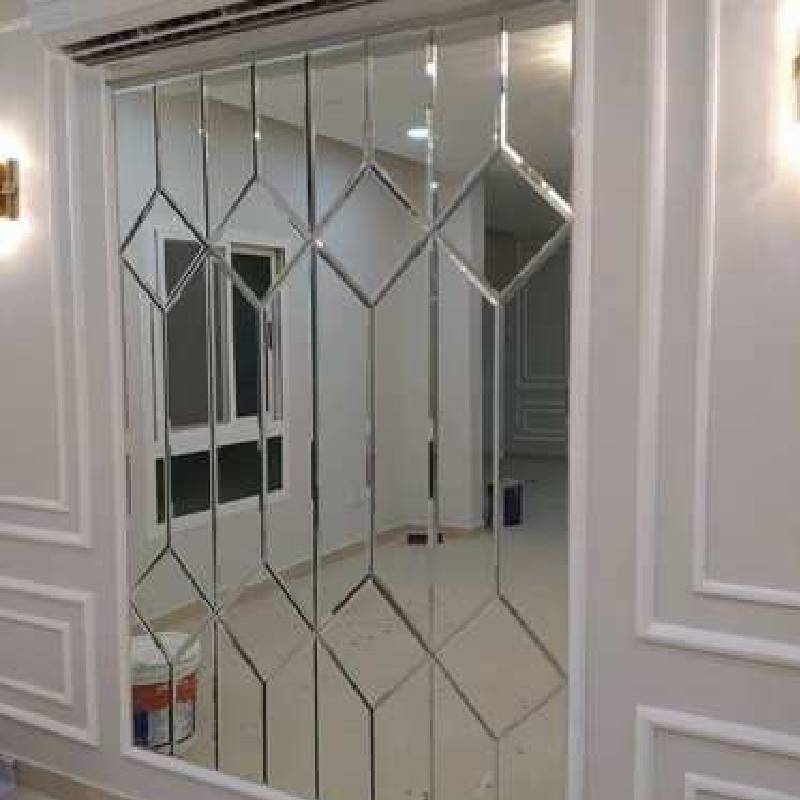Types of Opaque Glass An Overview
Opaque glass, characterized by its inability to transmit light, plays a crucial role in various applications ranging from construction to art. Unlike transparent glass, which is prized for its clarity, opaque glass provides privacy, protection from ultraviolet rays, and various aesthetic options. This article explores the different types of opaque glass, their properties, uses, and advantages.
1. Frosted Glass
Frosted glass is achieved through sandblasting or acid etching, creating a textured surface that diffuses light. It is commonly used in bathroom windows, shower doors, and office partitions to allow light while maintaining privacy. The main advantage of frosted glass is its ability to obscure visibility without completely blocking light, making it an ideal choice for spaces that require both illumination and discretion. The subtle texture also adds a touch of elegance to any setting.
2. Satin Glass
Satin glass, similar to frosted glass, has a smooth, matte finish that offers a softer appearance. This type of glass is produced using a chemical process that modifies the surface to achieve its distinctive look. Satin glass is often used in interior design elements like cabinet doors, room dividers, and decorative panels. Its sleek finish adds sophistication and can be combined with various design styles, from modern to traditional.
3
. Colored Glass
Colored opaque glass is created by adding pigments to the glass during production, resulting in vibrant hues that can enhance aesthetic appeal. This type of glass can be found in applications ranging from stained glass windows in churches to decorative pieces in contemporary architecture. The ability to control colors allows designers to create stunning visual effects while maintaining the privacy that opaque glass provides. Furthermore, colored glass can also filter light, creating a mood that complements the surroundings.
types of opaque glass
4. Laminated Glass
Laminated glass consists of two or more layers of glass interlayered with a plastic film. The combination of these materials offers enhanced safety and security, making it a popular choice for commercial buildings, storefronts, and public spaces. While laminated glass is not exclusively opaque, certain variants are crafted to be non-transparent. This type of glass can resist shattering, providing added protection against impacts and burglaries. Its acoustic properties also make it a popular choice for noisy environments, ensuring both noise reduction and privacy.
5. Ceramic Frit Glass
Ceramic frit glass has a decorative coating that is fused to the surface, creating an opaque finish with custom patterns and designs. This type of glass is often used in architectural applications, such as façades and interior walls. The frit coating not only adds an artistic touch but also serves functional purposes, such as reducing glare and increasing energy efficiency. Ceramic frit glass can be found in various colors and patterns, allowing for creative freedom in design.
6. Back-Painted Glass
Back-painted glass is produced by applying a layer of paint to one side of clear glass. This method transforms the glass into an opaque surface available in various colors and finishes. Back-painted glass is increasingly used in kitchens, bathrooms, and office spaces as a stylish alternative to traditional wall coverings. Its easy maintenance and variety of colors make it a versatile option for both residential and commercial environments.
Conclusion
Opaque glass is not just a functional material; it also serves as an essential design element in various applications. From frosted and satin to colored and laminated glass, the diversity of opaque glass types offers numerous possibilities for architects, designers, and homeowners. Each type possesses unique properties that cater to different needs—whether for privacy, aesthetic appeal, safety, or energy efficiency. As technology advances, the options for opaque glass continue to expand, making it an exciting area within the realm of architectural and interior design. Choosing the right type of opaque glass can significantly enhance a space's visual and functional characteristics, demonstrating that beauty and utility can indeed go hand in hand.
 Afrikaans
Afrikaans  Albanian
Albanian  Amharic
Amharic  Arabic
Arabic  Armenian
Armenian  Azerbaijani
Azerbaijani  Basque
Basque  Belarusian
Belarusian  Bengali
Bengali  Bosnian
Bosnian  Bulgarian
Bulgarian  Catalan
Catalan  Cebuano
Cebuano  Corsican
Corsican  Croatian
Croatian  Czech
Czech  Danish
Danish  Dutch
Dutch  English
English  Esperanto
Esperanto  Estonian
Estonian  Finnish
Finnish  French
French  Frisian
Frisian  Galician
Galician  Georgian
Georgian  German
German  Greek
Greek  Gujarati
Gujarati  Haitian Creole
Haitian Creole  hausa
hausa  hawaiian
hawaiian  Hebrew
Hebrew  Hindi
Hindi  Miao
Miao  Hungarian
Hungarian  Icelandic
Icelandic  igbo
igbo  Indonesian
Indonesian  irish
irish  Italian
Italian  Japanese
Japanese  Javanese
Javanese  Kannada
Kannada  kazakh
kazakh  Khmer
Khmer  Rwandese
Rwandese  Korean
Korean  Kurdish
Kurdish  Kyrgyz
Kyrgyz  Lao
Lao  Latin
Latin  Latvian
Latvian  Lithuanian
Lithuanian  Luxembourgish
Luxembourgish  Macedonian
Macedonian  Malgashi
Malgashi  Malay
Malay  Malayalam
Malayalam  Maltese
Maltese  Maori
Maori  Marathi
Marathi  Mongolian
Mongolian  Myanmar
Myanmar  Nepali
Nepali  Norwegian
Norwegian  Norwegian
Norwegian  Occitan
Occitan  Pashto
Pashto  Persian
Persian  Polish
Polish  Portuguese
Portuguese  Punjabi
Punjabi  Romanian
Romanian  Russian
Russian  Samoan
Samoan  Scottish Gaelic
Scottish Gaelic  Serbian
Serbian  Sesotho
Sesotho  Shona
Shona  Sindhi
Sindhi  Sinhala
Sinhala  Slovak
Slovak  Slovenian
Slovenian  Somali
Somali  Spanish
Spanish  Sundanese
Sundanese  Swahili
Swahili  Swedish
Swedish  Tagalog
Tagalog  Tajik
Tajik  Tamil
Tamil  Tatar
Tatar  Telugu
Telugu  Thai
Thai  Turkish
Turkish  Turkmen
Turkmen  Ukrainian
Ukrainian  Urdu
Urdu  Uighur
Uighur  Uzbek
Uzbek  Vietnamese
Vietnamese  Welsh
Welsh  Bantu
Bantu  Yiddish
Yiddish  Yoruba
Yoruba  Zulu
Zulu 

